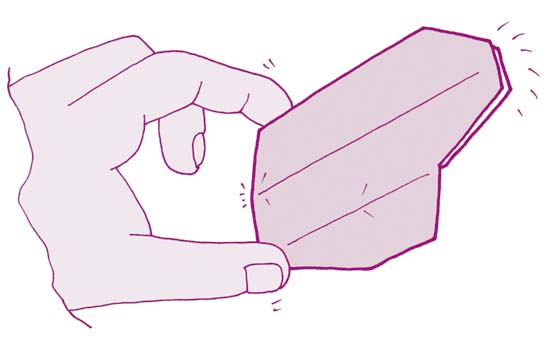I have a sneaking preference for models that are somewhat abstract, in which the subject (here, a frog) and the mechanism arise from simple geometry of the folding rather than from an overemphasis on model-making. This approach somehow creates models that are less contrived and seem to have been discovered rather than invented.
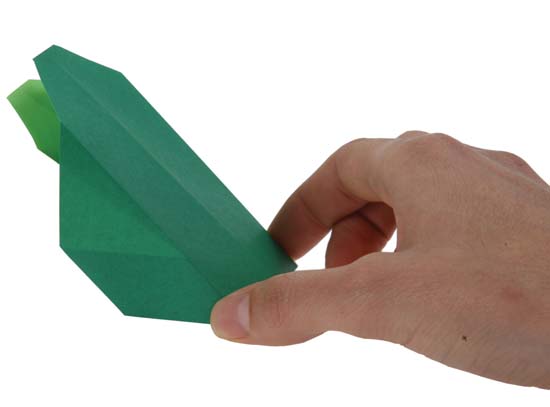
Begin with a square of origami paper, white side up.
1. Fold corner to corner. Unfold.
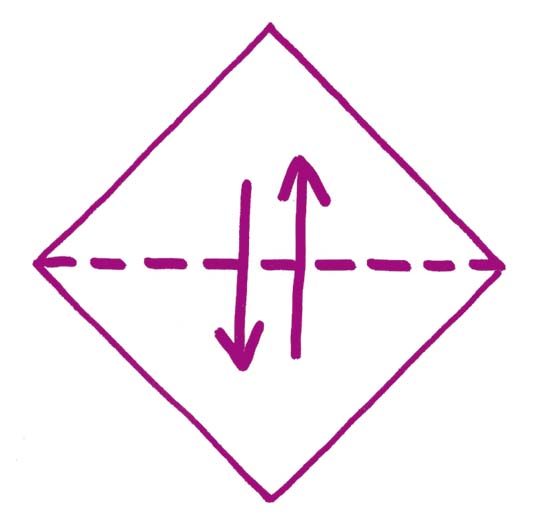
2. Similarly, fold and unfold, but between the other corners.
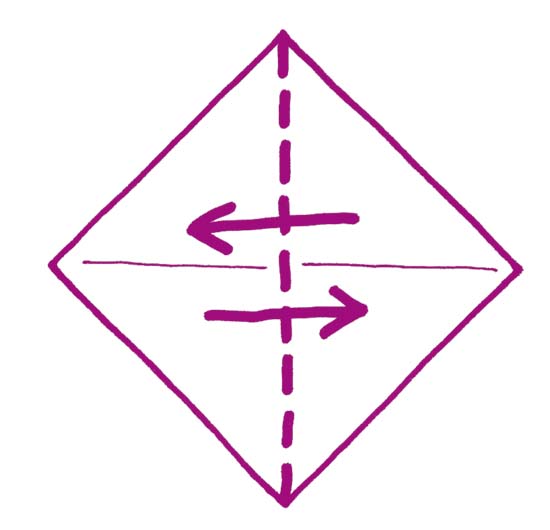
3. Fold the left and right corners to the center point.
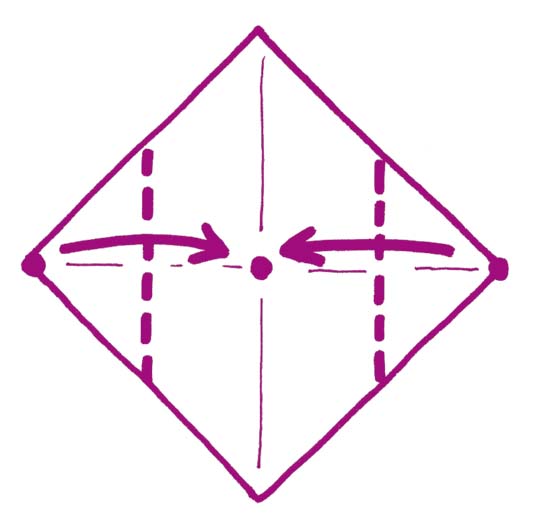
4. Fold the paper in half.
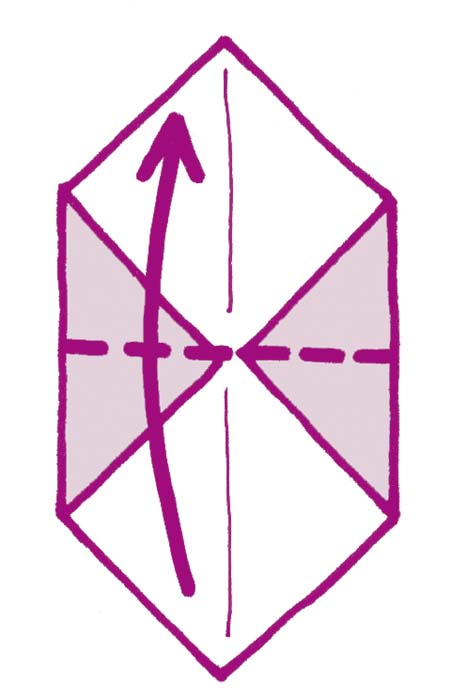
5. Fold dot to dot, bringing the right-hand edge to the center line.
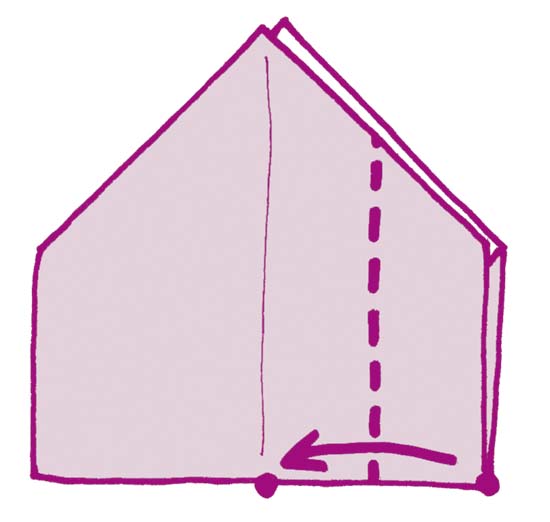
6. Swing the top edge only across to the right, leaving the back edge at the center line...
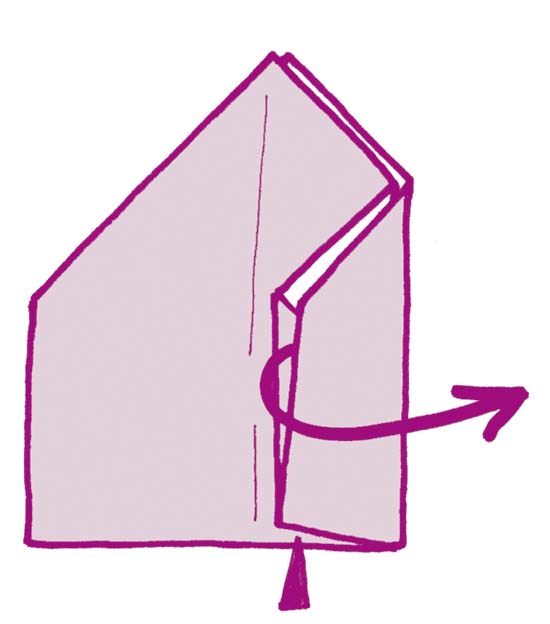
7....like this. Apply pressure on the corner, so that the paper begins to flatten itself . . .
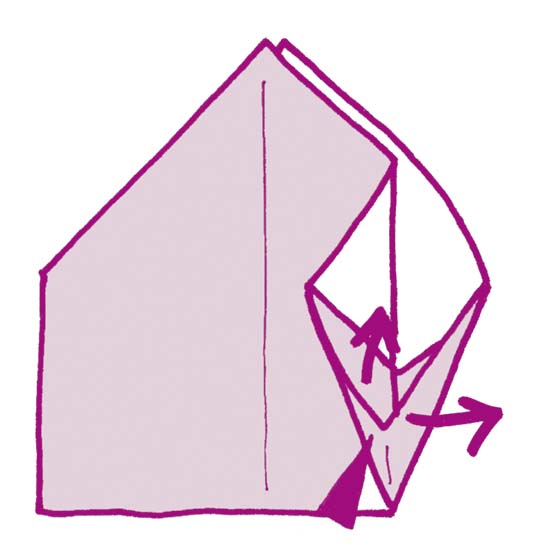
8....like this. Note the combination of triangles and the color changes on the right-hand side of the paper. Repeat Steps 6–7 on the left-hand side.
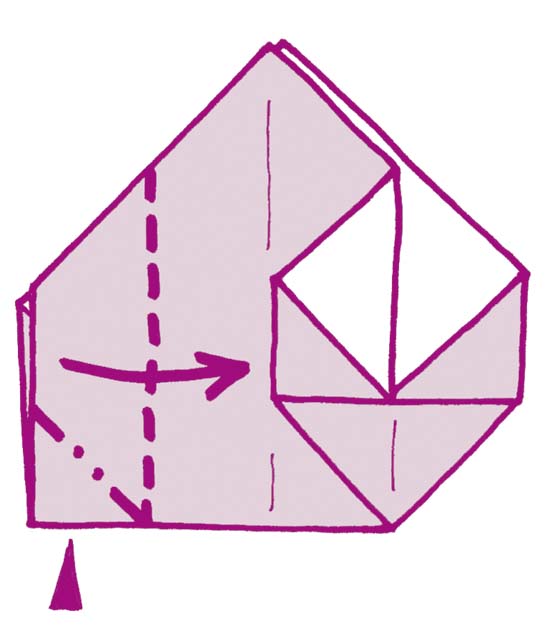
9. The paper is now symmetrical, left and right. Fold down the center “tongue” of paper.
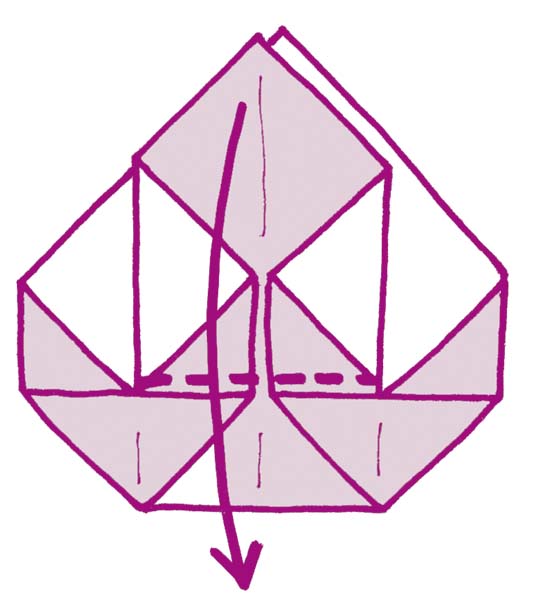
10. Unfold Step 9.
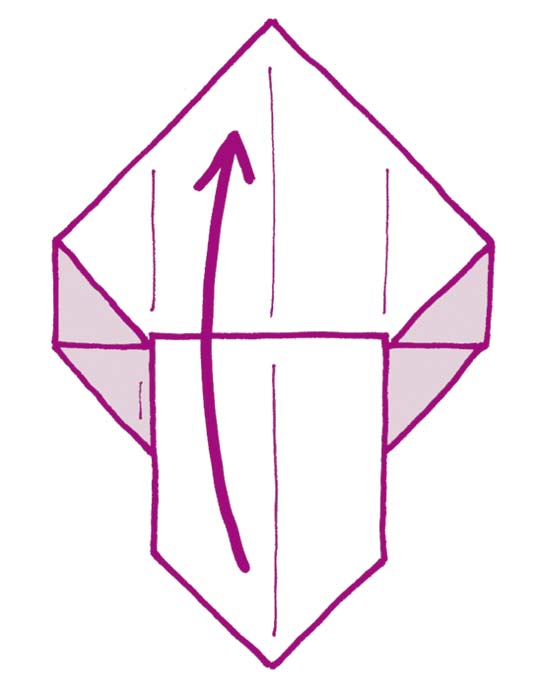
11. The next three steps are magnified.
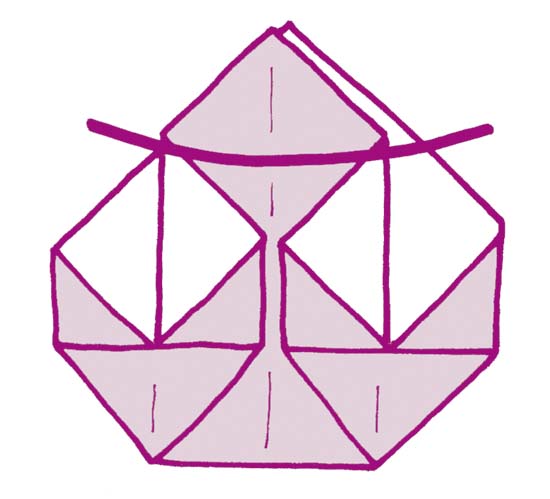
12. Fold down both corners with very small folds.
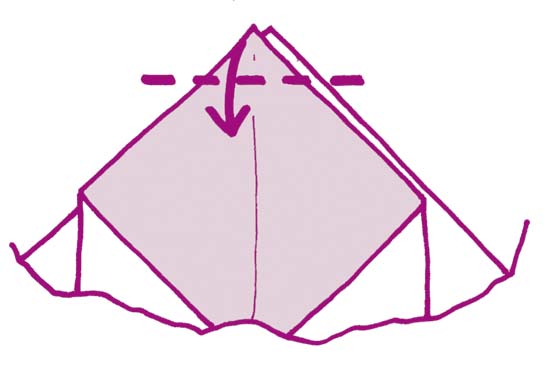
13. Rearrange the layers so that the white triangle sits on top of the colored triangle . . .
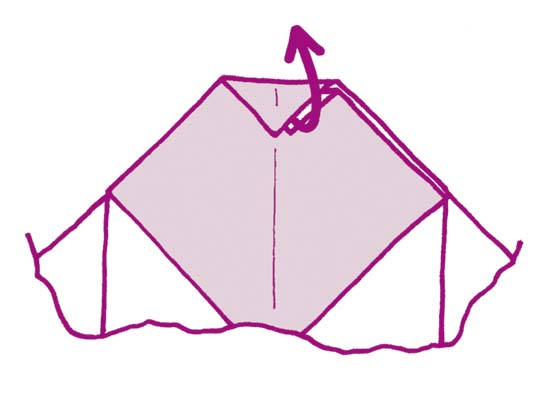
14....like this.
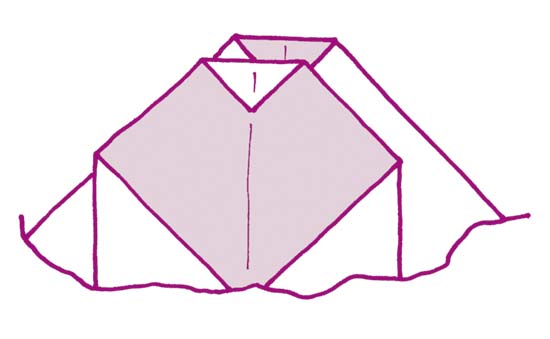
15. Fold in the side edges to the center line . . .
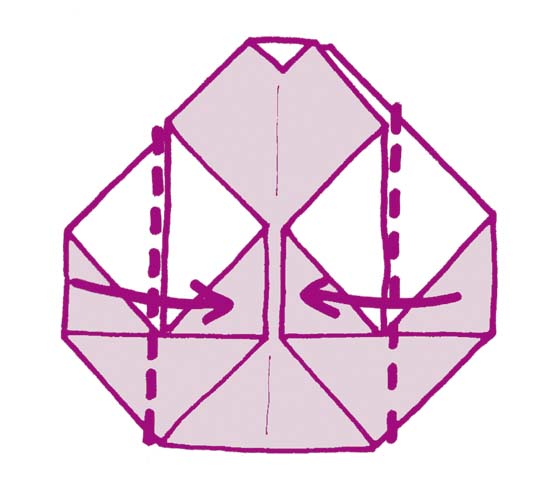
16....and then unfold them so that seen from head-on, the paper resembles three sides of a box.
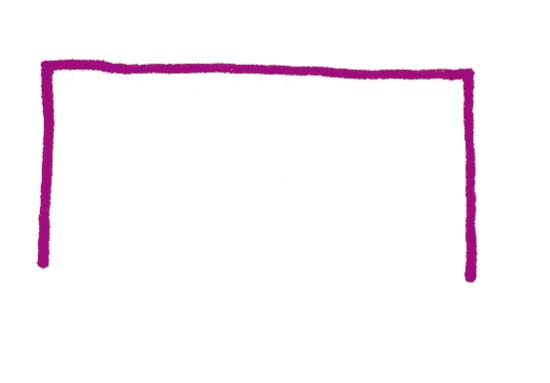
17. To make the frog croak, hold as shown on a smooth surface. Make a very short mountain fold where shown. Squeeze your finger and thumb gently together...
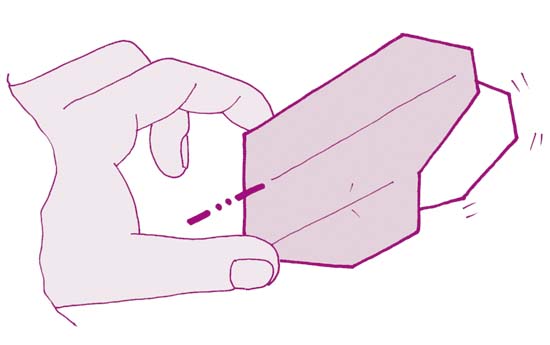
18....and the jaw will snap shut. Relax your hand and the jaw will fall open under its own weight, ready for the jaw to be snapped shut again.
